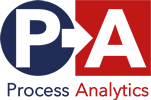Summary
In the context of the “Process Mining in Logistics” research project between Vanderlande Industries and TU Eindhoven, we are offering multiple Master projects on process mining on event data of large-scale material handling systems. The fundamental challenges addressed are size and volume (logistics process data is significantly larger than business processes) and integration of physical data with process and operation data.
Vanderlande
Vanderlande is the global market leader for value-added logistic process automation at airports and in the parcel market. The company is also a leading supplier of process automation solutions for warehouses. Some figures:
- Vanderlande’s baggage handling systems move 3.7 billion pieces of luggage around the world per year.
- Vanderlande’s systems are active in 600 airports including 13 of the world’s top 20.
- More than 39 million parcels are sorted by its systems every day, which have been installed for the world’s leading parcel companies.
- More than 206 projects in 105 countries
- Many of the largest global e-commerce players and distribution firms have confidence in Vanderlande’s efficient and reliable solutions.
Vanderlande focuses on the optimization of its customers’ business processes and competitive positions. Through close cooperation, Vanderlande strives for the improvement of our customers’ operational activities and the expansion of their logistical achievements.
For Vanderlande, it is critical to have state-of-the-art techniques to analyze and optimize our customers’ logistics processes. Reasons are (a) the constantly increasing size and complexity of our material handling solutions, (b) growing complexity of our software solutions, covering larger and larger parts of our customers’ business processes, and (c) the demand for more advanced service offerings, covering logistics and business services together. Vanderlande believes that process mining is of high value for the company. Therefore, Vanderlande works with the Eindhoven University of Technology on making process mining fit for analyzing logistics processes. In this context, Vanderlande offers graduation positions on process mining and the application in our business.
Offered Topic
Vanderlande offers automated warehouse solutions to their customers. Part of these solutions are industrial robot arms that can stack and de-stack products. One type of robot arms can remove products of the same type from a pallet sent by a supplier, called “depalletizing”. Think of a pallet full of stacked boxes of pasta bags that all have to be removed to be distributed further one by one. The other type of robots carefully stacks products of different sizes, weight and stability into roll cages, called “palletizing”. Think of stacking beverages, pasta, chocolate, flour, toilet paper etc. to be delivered to a single supermarket. A planning program gives the robot the ideal placement of all products in the roll cage (heavy products at the bottom, lighter products at the top, place products only on the stable edges of other boxes underneath etc.).
Both types of robots are operating with various sensors and internal models to pick up products and place them on the conveyor belt or in the roll cage. As in any automated system, sensors may not be fully reliable, and models may not capture all aspects of the movement and placement of products. This can lead to products being not placed correctly on the conveyor belt or in the roll cage. In the latter case, incorrect placement of products can lead to a blockage of the robot arm during a next placement, or an instable stack that can in the worst-case collapse during further handling. Vanderlande is collecting extensive data about the movement of the robot arm, the placement and position of products and all desired and undesired events in this palletizing and depalletizing process.
The long-term objective of Vanderlande is to create an improved model of product placement on conveyor belts and in roll cages together with an improved model of the robot arm that can inform the development of better control model for the robot.
This project takes a first step in developing a reliable data-driven model of the process of palletizing products from the available data, that is, how products are actually being placed and stacked in roll cages.
- The first objective is to develop a knowledge-graph describing the physical positioning of products on the stack in the roll cage. The graph shall describe products, their relative and absolute position, augmented with sensor information about (in-)correct placement, and event information about robot movement and when and how products are being placed. Altogether, this graph shall describe the process of building a stack in time and space in a single data model.
- The second objective is to explore reasoning on this knowledge graph through querying and graph mining: How does the stack built from sensor and event information compare to the ideal stack given by the planning program? By comparing different stacks built for different product combinations, are there typical deviations or mistakes in stacking that cause undesired events in the stacking? Can the causes be detected as the stack is being built before undesired events occur?
- The final objective is to outline data requirements to make the same knowledge-graph based approach also applicable to the de-palletizing step (as currently less data is available for this step).
The expected outcomes of this project are:
- A proof-of-concept data model for a knowledge graph of the process of building a product stack by a robot arm that addresses the above properties;
- A proof-of-concept implementation of a data integration and processing pipeline to construct such knowledge graphs from available data sources within Vanderlande;
- An evaluation of which properties of the process of building a product stack can be answered reliably on the knowledge graph using process mining and graph mining, for example which (combinations of) product properties lead to undesired events in the palletizing process.
Contact
- See https://pa.win.tue.nl/master-projects/ for the procedure
- Dirk Fahland d.fahland@tue.nl
